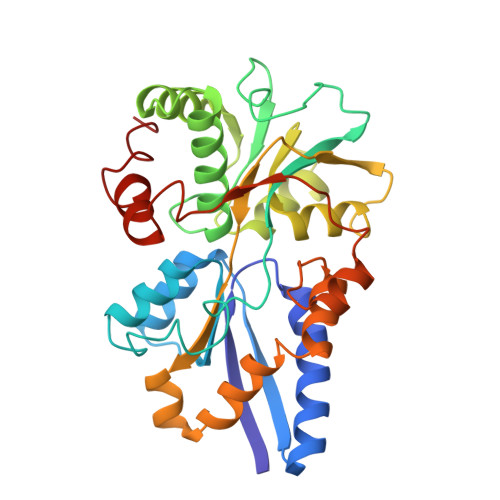Dominant role of local dipoles in stabilizing uncompensated charges on a sulfate sequestered in a periplasmic active transport protein.
He, J.J., Quiocho, F.A.(1993) Protein Sci 2: 1643-1647
- PubMed: 8251939
- DOI: https://doi.org/10.1002/pro.5560021010
- Primary Citation of Related Structures:
1SBP - PubMed Abstract:
Electrostatic interactions are among the key factors determining the structure and function of proteins. Here we report experimental results that illuminate the functional importance of local dipoles to these interactions. The refined 1.7-A X-ray structure of the liganded form of the sulfate-binding protein, a primary sulfate active transport receptor of Salmonella typhimurium, shows that the sulfate dianion is completely buried and bound by hydrogen bonds (mostly main-chain peptide NH groups) and van der Waals forces. The sulfate is also closely linked, via one of these peptide units, to a His residue. It is also adjacent to the N-termini of three alpha-helices, of which the two shortest have their C-termini "capped" by Arg residues. Site-directed mutagenesis of the recombinant Escherichia coli sulfate receptor had no effect on sulfate-binding activity when an Asn residue was substituted for the positively charged His and the two Arg (changed singly and together) residues. These results, combined with other observations, further solidify the idea that stabilization of uncompensated charges in a protein is a highly localized process that involves a collection of local dipoles, including those of peptide units confined to the first turns of helices. The contribution of helix macrodipoles appears insignificant.
- Howard Hughes Medical Institute, Baylor College of Medicine, Houston, Texas 77030.
Organizational Affiliation:

















